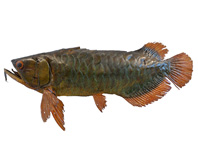Abstract
Evolution is a multivariate process which, therefore, is expected to leave multiple recognizable signals after episodes of speciation. These signals express in the genome regardless of the mechanism driving speciation, and in a few or in multiple phenotypic traits when divergent selection has been implicated. In lineages that have undergone adaptive radiations (i.e. speciation accompanied by ecological diversification), the phenotypic signals of speciation can be substantially pronounced. In contrast, within non-adaptive radiations (i.e. lineage diversification with minimal ecological diversification linked to allopatric or parapatric species distributions), phenotypic signals of speciation can be minimal. The South American lizard genus Phymaturus is regarded as a candidate non-adaptive radiation given the tendency for non-overlapping distributions among its phenotypically and ecologically similar (i.e. niche conservatism) species. Thus, limited phenotypic divergence has evolved among closely related species. Within the patagonicus clade of the genus, sexual monochromatism is highly conserved, while sexual dichromatism is rare, and mostly negligible when observed. In this paper, we provide the description of a new sexually dimorphic and dichromatic species of this clade (Phymaturus camilae sp. nov.). This species is substantially isolated spatially and phylogenetically separated from P. ceii, P. delheyi and P. zapalensis, the most sexually dichromatic members of the clade. In addition, the new taxon was recently identified as a ‘candidate new species’ based on molecular (nuclear) phylogenetic evidence.

